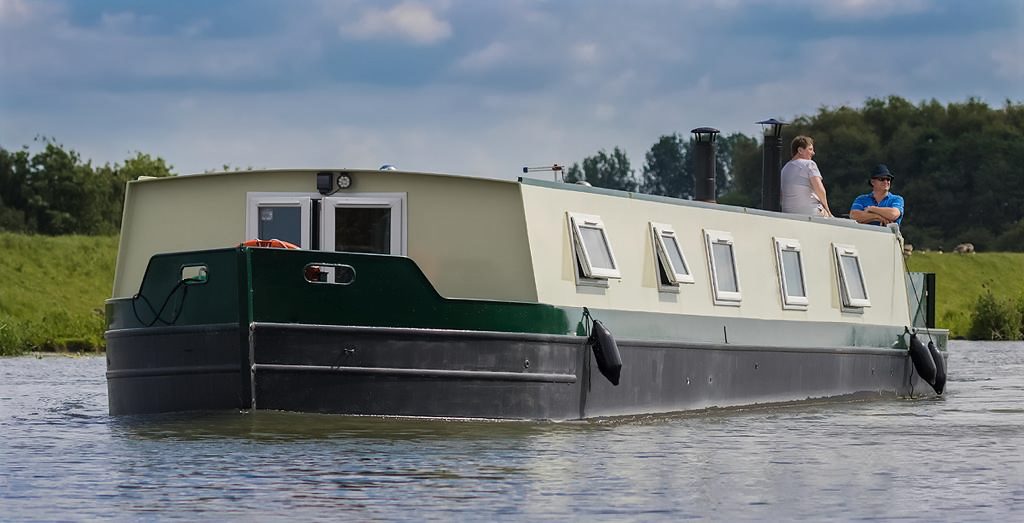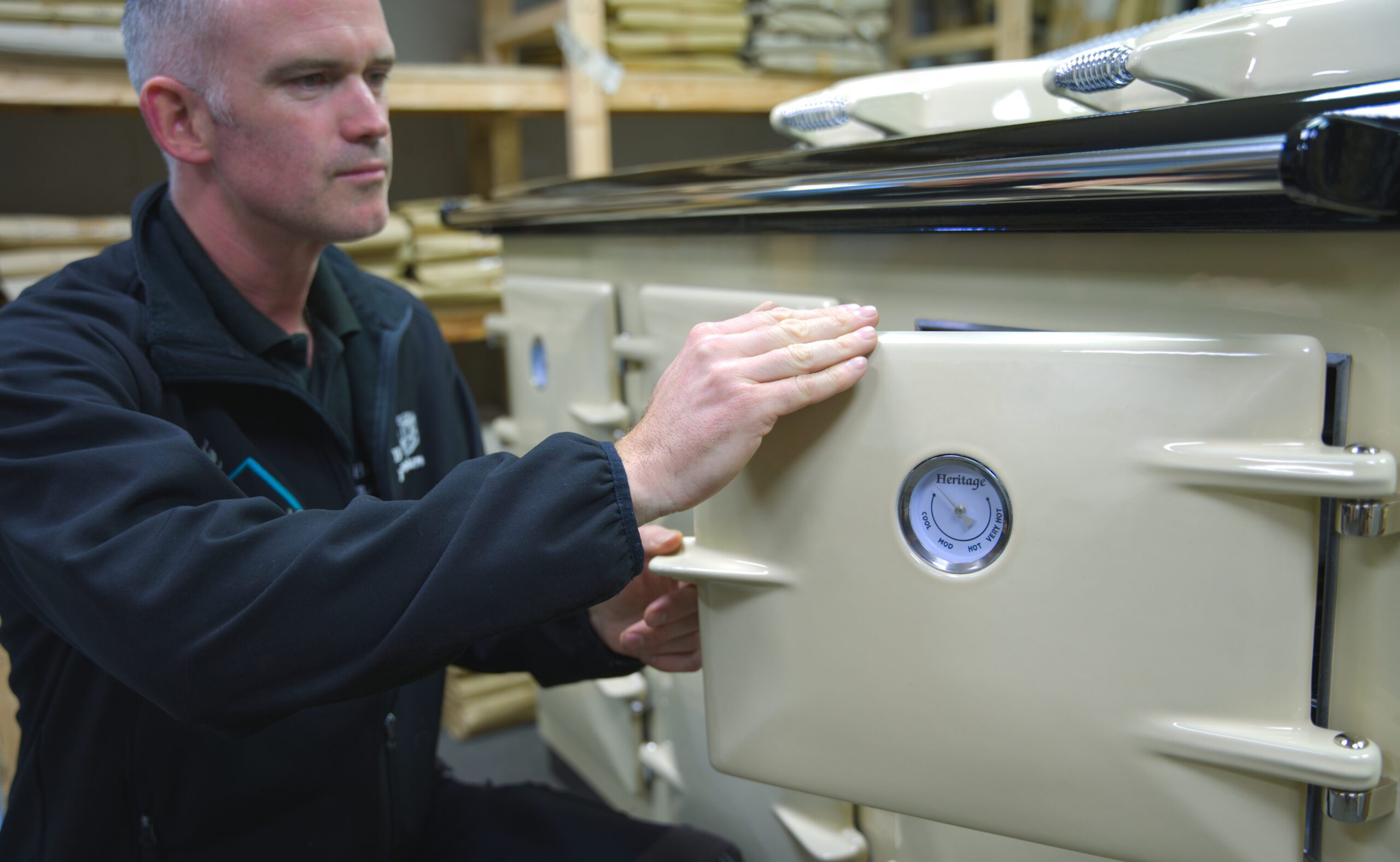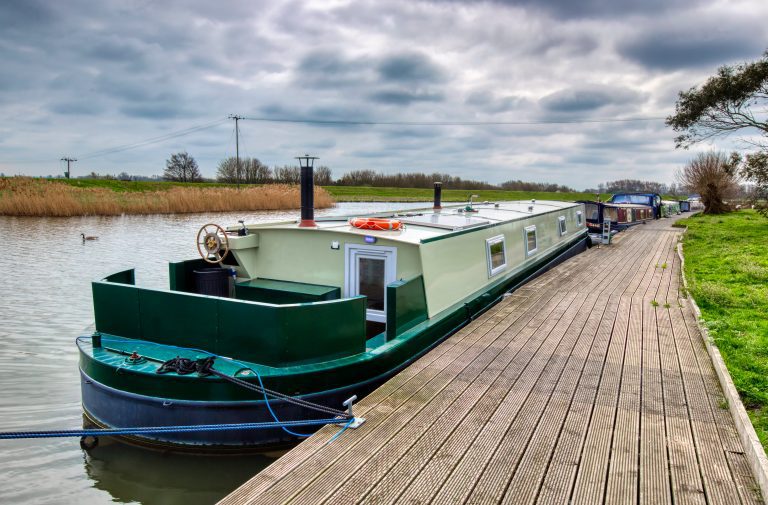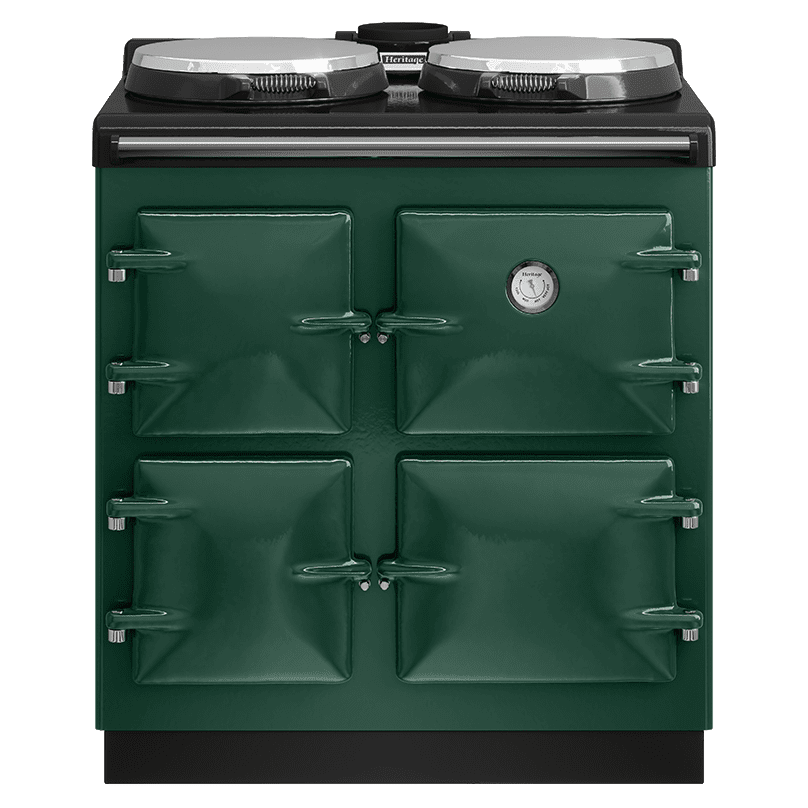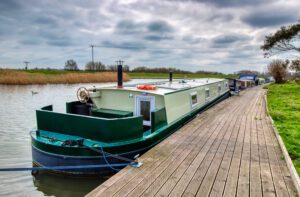
Andrew & Wendy’s Experience
One boating couple who installed a Heritage Range Cooker on their boat are Andrew & Wendy. We find out why they chose Heritage, how it works for heating and cooking, and how a range cooker has improved their houseboat living.
What was it that made you move from a house to a houseboat?
We were a pretty typical family of four. Myself, my wife Wendy and two grown children. Much of our life had revolved around Cambridge, from ballroom dancing to our religious activities. To move to Cambridge seemed the obvious thing but the cost of housing was prohibitive. There was no way we could afford it, so the idea was shelved. Our two children left home and married at the end of 2008. Suddenly we were “empty nesters” and hatched the plan to sell the house and live on a widebeam barge moored on the River Cam in Cambridge. I had spent 20 years doing up the house and it was perfect in every way. As well as being an electrical and mechanical engineer I relished the challenge of fitting out a boat to live on board.
What options did you consider when looking at cooking and heating?
Firstly, I would say I never envisaged I could get cooking, heating, and hot water from the same appliance. The boat was delivered as a shell, and I’ve fitted everything myself. This means, as we were living on board from day one, in a tent!
So, the water system went in quickly which included a 75litre stainless steel, twin coil calorifier. One coil is connected to the engine which heats it when running. The other coil was connected to a Mikuni diesel night heater a few months later but initially we used the 1KW immersion heater when stationary. The Mikuni eventually was running underfloor heating in the Bathroom and galley and a radiator in the forward cabin. We cooked on a camping stove running off LPG from day one until 2015 when we bought the Heritage.
When we fitted the kitchen, I left a 600mm wide gap for a good quality LPG cooker when it came to the top of the triage list. The Mikuni boiler proved unreliable, noisy, and expensive to keep running; so, a rethink was necessary. We have a multi-fuel stove in the saloon which is open plan with the galley, and this was something we enjoyed using and wanted to keep. Electric was out of the question as a liveaboard boat by necessity has to limit its large electrical loads. I needed a new, robust, reliable diesel fired boiler to run heating and hot water, but LPG was begrudgingly still on the cards for cooking.
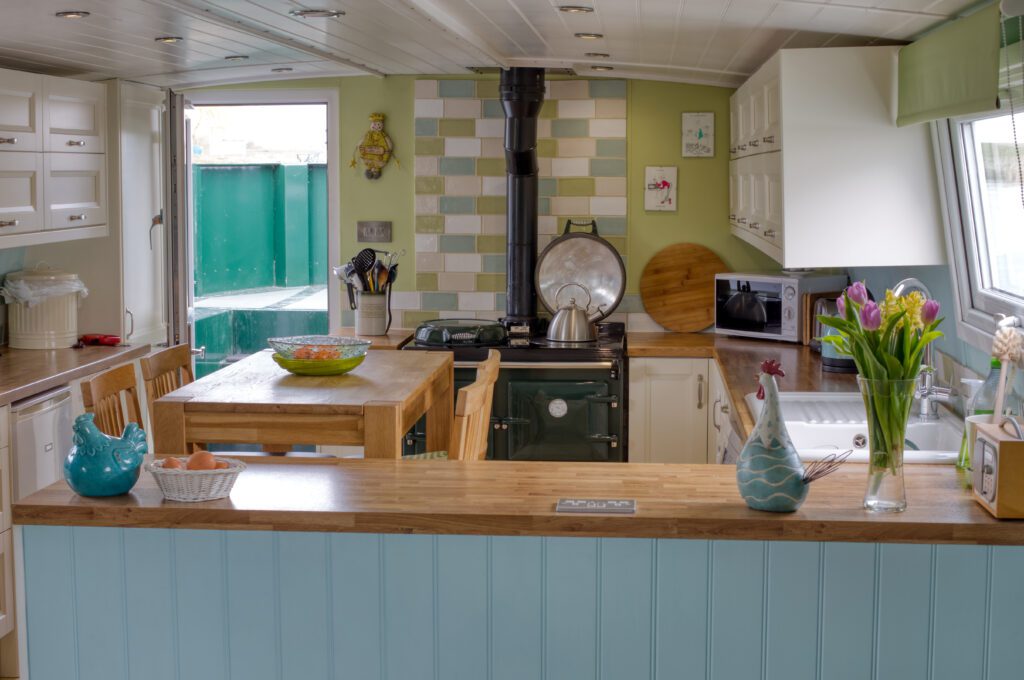
Was the safety side of LPG something that concerned you?
Yes. A boat has to have a Boat Safety Certificate renewed every 4 years and the biggest part of that process is gas safety! Every year you read about boats catching fire due to LPG leaks. I had seen Heritage Uno models on upmarket narrowboat fit outs at boat shows but didn’t look any further thinking they wouldn’t have a model suitable or affordable for my vessel.
You chose a Heritage Compact boiler model, why this one?
The Compact gave larger cooking capacity, and we had the room available. We spoke to Heritage, perused their website, and visited the showroom in Liskeard. When we considered one appliance could deal with cooking, heating, and hot water the idea became eminently affordable. As our boat is a VAT free vessel Heating South West helped us reclaim the VAT paid on the cooker making it even better value. We chose the Compact Duette. This model has two pressure jet burners which gives us control over heating and cooking as separate functions. Also having two hotplates makes stovetop cooking easier too. We simply had to modify the kitchen units to allow an extra 240mm to fit the compact rather than a 600mm LPG cooker.
How much planning went into getting the cooker installed into your boat?
Being an engineer, I research, plan, and figure all things out well in advance. The cooker is positioned against the stern bulkhead, so is near the fuel tank and adjacent the cupboard containing the electrical input and controls. The deckhead (roof) is 5mm steel with insulation and internal board finish. There are 50mmx50mm square tube structural bearers every 400mm, so the flue had to be dog legged to avoid one of these. Boats by their very nature have to be well ventilated and this is a key element of the BSC. The Heritage is interesting as it draws its air from outside via flexible hoses with external louvered vents, so doesn’t need more open ventilation into the cabin. Heritage delivered the cooker, broke it down into its constituent parts, moved it into position and rebuilt it ready for me to install and make the flue, electrical and water connections.
What does the Heritage control?
Underfloor heating in the galley and bathroom, one radiator in the forward cabin, and a 75 litre calorifier for hot water.
Would you recommend looking at a Range Cooker in general?
Our boat is 70×12 feet and weighs more than 35 tonnes without the cooker. We obviously had the room and weight carrying capacity available. As it does so much for us in one appliance it really is the answer to our needs.
How has your experience been with Heritage Range Cookers?
Our experience with Heritage is what I would expect when buying a premium heating cooking product. We visited the showroom in Liskeard. They have loads of cookers on show and were helpful and knowledgeable in assisting us to make our choice. Servicing is available and excellent for keeping the cooker running reliably and efficiently.
We chose British Racing Green with a black top. It looks beautiful and never fails to impress visitors. However, the real joy is cooking and keeping warm reliably. Basically, we love it!
